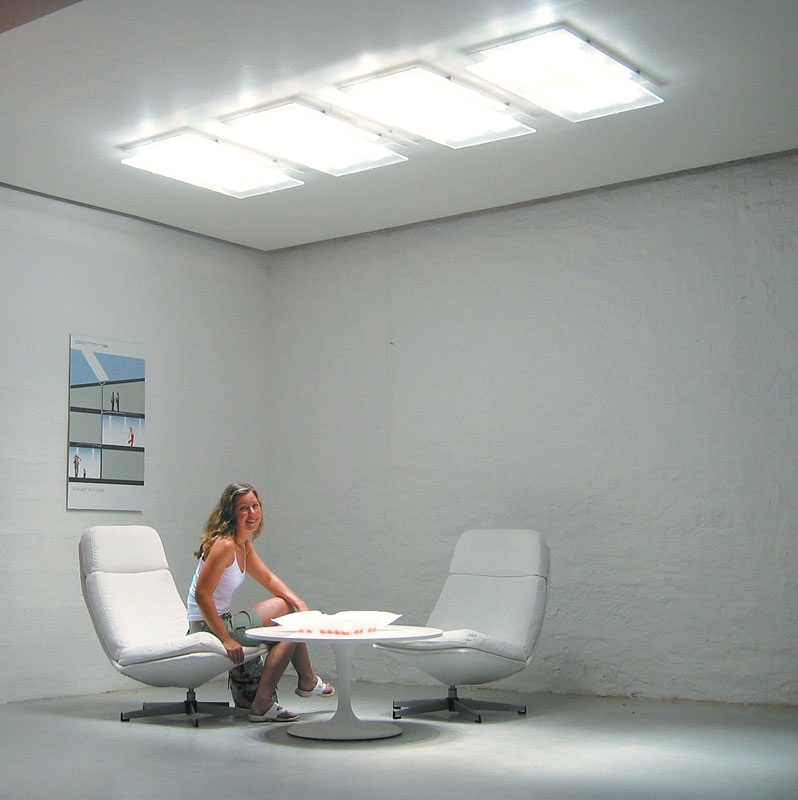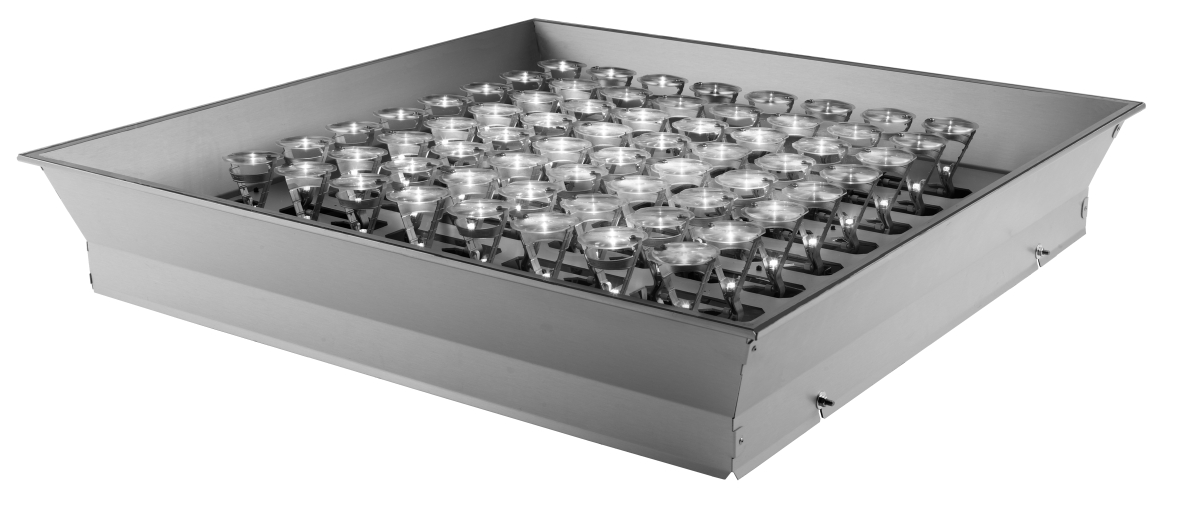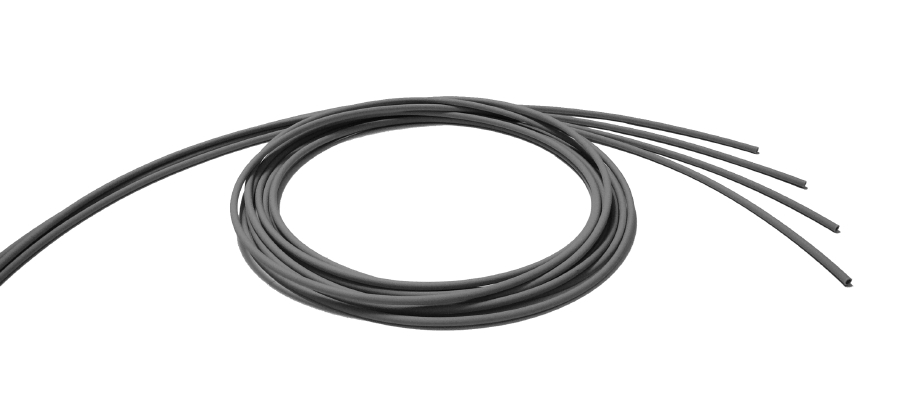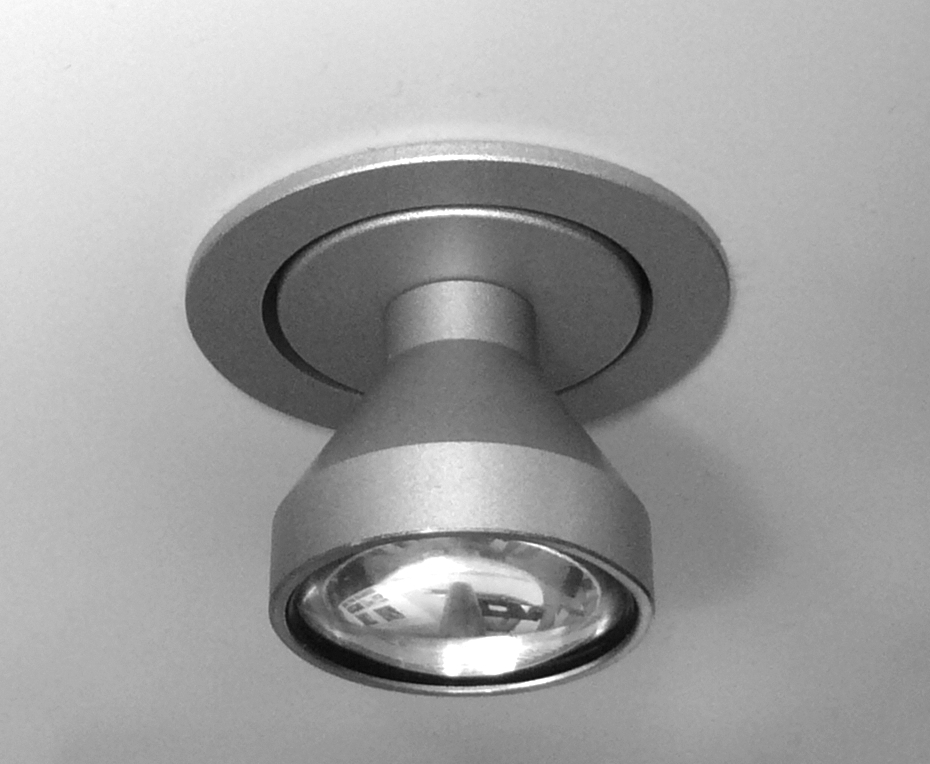Is there any progress in cost lowering , for sunlight transfer , from rooves to internal spaces ? Currently assisting an architect with a large scale light transfer where we have available 18,000 sq ft of roof . contact me if this is of interest to inventor or researcher . I am contactable : email @ petersfield hotel dot com . thanks .
Blog Post
Fiber Optics for Daylighting




Published May 11, 2010 Permalink Citation
(2010, May 11). Fiber Optics for Daylighting. Retrieved from https://www.buildinggreen.com/blog/fiber-optics-daylighting
Comments
Whole-house illumination
I've been waiting at least 20 years for large scale development of fiber optic lighting for homes and buildings. Forget about the cost of tracking and funneling sunlight---couldn't you light a whole house with just one bright bulb in a reflector box? I'm starting a big project designed to possibly be off-grid, in an area remote enough to worry about power loss, and planning a large solar array for many buildings, ranging from several cabins to three homes to a large community building to a large indoor riding arena and barn. The amount of money I could save by not having to engineer my solar system to do all of that lighting is astounding even without the solar collection aspect.
Why is the concept so unknown and why are the materials still so expensive? I would have thought the enviros would have been all over this years ago, and costs would have come down as usage went up. But all I ever see is accent lighting, pool lighting, ads and décor lighting.
Lighting house with natural light
Cost and what products are available ?
Possible going into business?
TO LIGHT THE WORLD.!?
Mood and Stylistic
Hmm. I don't know if I saw the same program about Himawari, or if it was something else--thought I remembered it was an episode of 'Believe it or Not.' For me, it was intriguing, the vegetation shown, which was lush and, as I recall, underground. Well, that was 40-odd years ago, so I may not remember correctly.
I'm looking at fiber as a means of creative lighting, tayloring an 'environment' around the house, using the fibers in a creative way. I'm stunned, as was the other poster, that this hasn't been radically commercialized. "Real light, inside, anywhere, creative presentation allowed." I can even see it being set up that the light gets run through a prism (well, I don't know if this would work, but it's an interesting mental plaything) and that the results are used to manipulate interior environment.
So, I see that cost is a holdup. There has to be more to it than that. In fact, my guess is that cost is only a small fraction of the holdup. Someone in the industry want to comment?
Good tech
I am interested in to minimise pollution and use natural resources
I want to know about the
I want to know about the projects that is going on on solar lightning using fibre optics. Please send me details on my email address
Fiber optics is a part of app
Fiber optics is a part of applied science and is mainly used in communications. The sensors are specially designed fibers, which are used here to get the daylight effect. Thanks for the info.
These tomatos must be 100 000
These tomatos must be 100 000 $ per pound!
just read this old post of ye
just read this old post of year 2010 about optical fiber system, we are now assisting the Himawari optical fiber daylighting system to expanding their market
Since you only mentioned the Himawari is expensive at US$100,000, but you did not tell what items are inclusive, this is not too fair to Himawari, this US$100,000 can be just indicated the content with a set 12 lens outdoor unit, plus two nos. 150m optical fiber cables (each 492ft), wow, the length of optical fiber cable is just too long beyond your thought.
we are trying to provide some pricing idea with the similar length 20m optical cable which is about the max length from Parans, our list price are about US$25,000 for a set 12 lens outdoor unit plus 2 pcs each 20m cables with two lamp fixtures.
Advantages: you also totally neglected the advantages when talking about Himawari;
Based on Himawari's test report, the run of single optical fiber cable can be at 170m (557 ft) with light transmissivity efficiency 65.2%, this is far far better than any competitor at 40% left at only 20m, I rather install Solatube, the Solatube 21" dia efficiency at 20m is still much higher than 40%, but Solatube is then much cheaper.
pls email us if you needed any more technical information.
my last Posted 5/6/11 7:39 AM
my last Posted 5/6/11 7:39 AM by Thomas
this is our email: usathomas@gmail.com
I remember watching a PBS pro
I remember watching a PBS program as a kid about the Himawari system. They were growing tomatoe plants in the center core of a high rise building, and the only light provided was through the fiber cable. I've been waiting for a commercial application ever since- wonder why it isn't progressing faster?
Another great advantage of fi
Another great advantage of fibre optic lighting is that the fibres and/or end fittings can be permanently sealed in place, without having to worry about access to change bulbs.



Add new comment
To post a comment, you need to register for a BuildingGreen Basic membership (free) or login to your existing profile.